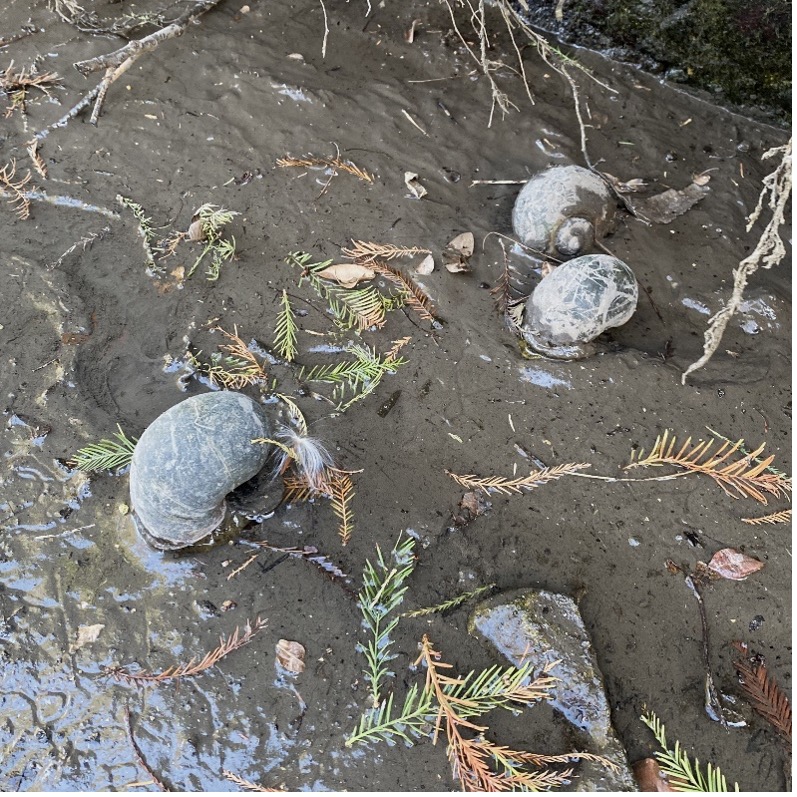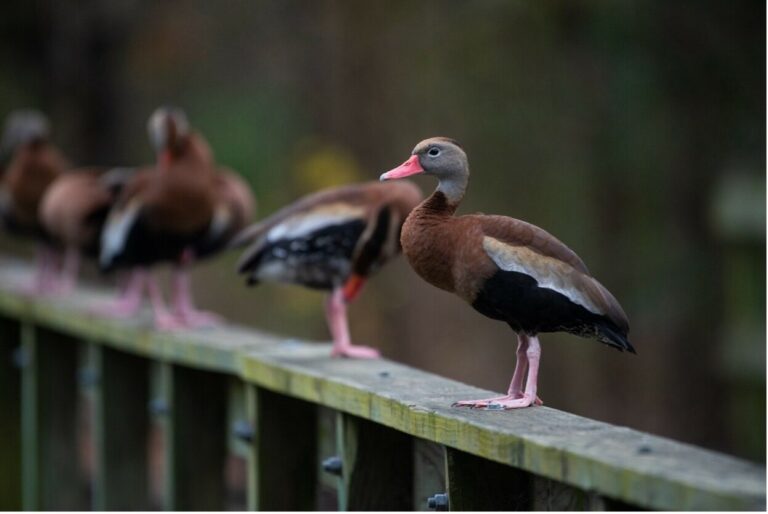The San Antonio River Authority Environmental Sciences Department takes pride in its daily environmental stewardship. One of the ways they ensure the environment remains at a healthy ecological balance is by defending the native ecosystem from pesky adversaries known as invasive species. Non-native invasive species have been introduced to our San Antonio River Basin in many ways, and it can be difficult to stop their spread and maintain a healthy ecosystem. You may have even seen recent photos of our team removing invasive species during the San Antonio River draining last month. This week, we commemorate National Invasive Species Awareness Week, which seeks to increase public awareness about the dangers of invasive species. So, what kinds of invasive species do we find in the San Antonio River, and why are they so destructive?
Right: River Authority staff walk in the drained riverbed of the San Antonio River in January. Left: Over 1,900 invasive Giant apple snails (Pomacea maculata) were removed during this year’s draining.
What are invasive species?
Invasive species are non-native species that have detrimental effects on their new environment. Invasive species have been brought to the San Antonio River Basin for many reasons and from far and wide, some coming from as far as South America, Asia, Europe, and many other places across the globe. Some species have been strategically placed for plant control and to boost the economy, while others were accidentally introduced by hitchhiking vehicles that frequent different water bodies. Many have been purposely introduced with the best intentions through tank dumping in local waterways. For example, blue tilapia came to Texas from the tropical regions of Africa. They were introduced as a different variety of sport fish, a food source for both predatory fish and humans, and as a means for aquatic plant control. Little did people know how harmful these invasive species could be to their natural environment! For more in-depth information on blue tilapia, check out our previous blog.
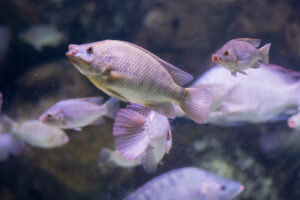
Blue tilapia (Oreochromis aureus)
Why are invasive species such a problem?
One of the most common effects of introducing an invasive species to an ecosystem is that they outcompete native species for resources because of the lack of natural predators. If a non-native species is introduced to an ecosystem with no natural predators, its ability to survive and multiply is amplified. This is accompanied by a higher and faster consumption rate of food resources that native species would otherwise utilize. We have seen this in our waterways with invasive species such as the giant apple snail, blue tilapia, and alligatorweed. These species are known to outcompete and overwhelm environments they’ve been introduced to due to their hardiness and lack of natural control factors.
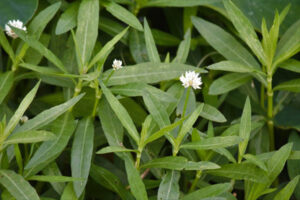
Alligatorweed (Alternanthera philoxeroides) Photo Credit: Peter Joseph
Another effect of invasive species is that they alter the landscape. An example of this can be seen with the elephant ear—a very aggressive, invasive species of aquatic plant. Also known as taro, arbi, and koi, this plant was introduced to Texas from the Asian tropics in the 1920s. It can grow thick and spread so quickly that it prevents other native plants from developing or establishing. In contrast, native plants have naturally evolved with the environment and provide services such as erosion control, bank stability, and foraging areas for large water birds. The change in habitat from a diverse community of plants to a single uncontrolled species can cause a cascade of effects on ecosystems.
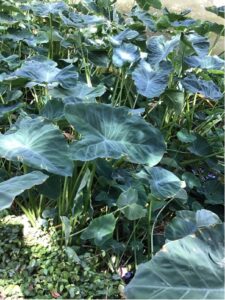
Elephant Ears/Taro (Colocasia esculenta) Photo Credit: Peter Joseph
Invasive species can also reduce biodiversity in their introduced environments. One of the ways species accomplish this is with attributes like unique reproductive abilities. For example, a recently reported newcomer known as the Marbled Crayfish is a crustacean species that can clone itself. Yes, clone itself! Releasing just one of these all-female crayfish could generate an entire population of genetically identical crayfish. The spread of this singular genetic makeup can create an imbalance of species variety and reduce the jobs and roles established native species would typically accomplish. Although no official wild communities of this species have been identified in the state, they are widespread in the pet trade and could have harmful impacts if purchased and dumped into local waterways. Impacts include a decline in ecosystem resilience from catastrophic events and a reduction in ecosystem services that humans use daily, such as clean air and clean water.
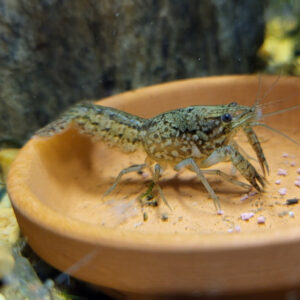
Marbled crayfish, also known as Marmorkrebs (Procambarus virginalis) Photo Credit: Texas Parks and Wildlife Department.
Three Actions You Can Take Against Invasive Species
If you’re looking to help reduce the negative impacts of invasive species, there are several ways to get involved:
- You can call in to report anything you see while recreating near the river and ensure that any vehicle or vessel you’ve used is cleaned and dried before traveling to a different water body.
- If you have a fish tank you can no longer handle or maintain, try donating the fish to a local pet shop instead of releasing them into your local lake or river. Don’t have a local shop? Check out some other options.
- Lastly, you could sign up for volunteer opportunities, like the River Authority’s River Warriors, which involves the removal of an invasive species or the replanting of native species.
It is essential for our community to maintain and restore the balance of our surrounding ecosystems so that we ensure a clean, safe, and enjoyable environment for generations to come. Join us to protect the San Antonio River!

